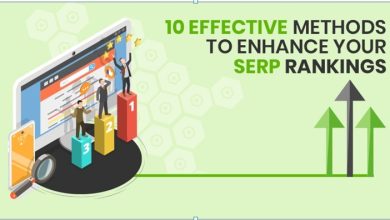E-commerce SEO: Optimizing Online Stores for Search Engines

In the rapidly evolving world of online shopping, having a well-optimized e-commerce website is essential for success. E-commerce SEO (Search Engine Optimization) focuses on improving the visibility of online stores in search engine results pages (SERPs). By optimizing various aspects of your e-commerce site, you can attract more organic traffic, enhance the user experience, and ultimately drive more sales. Here’s a comprehensive guide to e-commerce SEO and strategies to optimize your online store effectively.
Why E-commerce SEO Matters
Search engines are the primary gateway for online shoppers. Studies show that a significant percentage of e-commerce traffic comes from organic search results. Without proper SEO, your online store may struggle to rank in SERPs, making it difficult for potential customers to find your products. E-commerce SEO ensures your site ranks higher for relevant search terms, leading to increased visibility and a better chance of converting visitors into customers.
Key Components of E-commerce SEO
-
Keyword Research
Effective SEO begins with understanding what your target audience is searching for. Use tools like Google Keyword Planner, Ahrefs, or SEMrush to identify relevant keywords with high search volume and manageable competition. Focus on:
- Product-specific keywords
- Long-tail keywords
- Brand-related terms
-
On-Page SEO
Optimize each page of your e-commerce website for target keywords and improve its relevance for search engines. Key elements include:
- Title Tags: Ensure each page has a unique and descriptive title tag, including your primary keyword.
- Meta Descriptions: Write compelling meta descriptions that include keywords and encourage clicks.
- Header Tags (H1, H2, H3): Structure your content using headers for better readability and keyword optimization.
- Product Descriptions: Avoid duplicate content by writing original, detailed descriptions for each product, incorporating keywords naturally.
-
Site Architecture and Navigation
A clear and user-friendly site structure helps both users and search engines navigate your website. Focus on:
- Category Pages: Organize products into logical categories and subcategories.
- URL Structure: Use short, descriptive URLs with keywords (e.g., “www.example.com/shoes/running-shoes”).
- Internal Linking: Link related products and categories to enhance navigation and distribute link equity.
-
Technical SEO
The technical foundation of your website plays a crucial role in SEO. Ensure:
- Mobile Optimization: Your site is fully responsive and provides a seamless experience on mobile devices.
- Fast Loading Speed: Compress images, enable browser caching, and minimize code to reduce page load times.
- Secure Website: Use HTTPS to ensure secure transactions and build customer trust.
- XML Sitemap: Create and submit an XML sitemap to help search engines index your pages efficiently.
-
Content Marketing
High-quality content attracts visitors and builds authority. Create engaging and informative content such as:
- Blog posts related to your niche
- Product guides and tutorials
- Videos demonstrating product use
- Customer success stories
-
Optimizing Product Pages
Product pages are the heart of e-commerce websites. Optimize them with:
- High-Quality Images: Use clear, optimized images with descriptive alt tags.
- Customer Reviews: Encourage customers to leave reviews, as they improve credibility and help with SEO.
- Schema Markup: Implement schema markup for product prices, availability, and reviews to enhance search result visibility.
-
Building Backlinks
Backlinks from reputable websites signal trustworthiness and authority. Strategies for e-commerce link building include:
- Partnering with influencers or bloggers for product reviews
- Guest blogging on industry-related sites
- Creating shareable content like infographics or research studies
-
Local SEO
For e-commerce businesses with a physical presence, local SEO is essential. Optimize for local search by:
- Claiming and updating your Google My Business listing
- Encouraging local customer reviews
- Adding location-specific keywords to your content
Common E-commerce SEO Mistakes to Avoid
- Duplicate Content Many e-commerce sites suffer from duplicate content due to similar product descriptions or multiple URLs for the same page. Use canonical tags to address this issue.
- Neglecting Mobile Users With a large portion of online shopping done on mobile devices, failing to optimize for mobile users can harm your SEO efforts.
- Ignoring Technical SEO Issues like broken links, missing meta tags, and poor site speed can negatively impact rankings.
- Overlooking Analytics Regularly monitor your SEO performance using tools like Google Analytics and Google Search Console to identify areas for improvement.
E-commerce SEO Tools
Leverage the following tools to streamline your SEO efforts:
- Google Search Console: Monitor site performance and resolve indexing issues.
- Ahrefs or SEMrush: Conduct keyword research and analyze competitors.
- Screaming Frog: Audit your site for technical issues.
- Yoast SEO: Optimize on-page SEO for WordPress-based stores.
- PageSpeed Insights: Assess and improve site speed.
The Role of User Experience (UX) in E-commerce SEO
Search engines prioritize websites that offer a positive user experience. Factors influencing UX include:
- Easy Navigation: Users should quickly find what they’re looking for.
- Intuitive Design: A clean and visually appealing design enhances usability.
- Fast Checkout Process: Minimize steps and offer multiple payment options.
Measuring E-commerce SEO Success
Track the performance of your SEO strategy using key metrics:
- Organic Traffic: Measure the number of visitors coming from search engines.
- Conversion Rate: Assess how well your site turns visitors into customers.
- Bounce Rate: Monitor the percentage of users leaving after viewing one page.
- Keyword Rankings: Check your position for target keywords.
Conclusion
E-commerce SEO is an ongoing process that requires consistent effort and adaptation to changes in search engine algorithms. By focusing on comprehensive keyword research, on-page and technical SEO, quality content, and a strong user experience, you can optimize your online store for better visibility and increased sales. With the right strategies and tools, your e-commerce business can thrive in a competitive digital marketplace.





